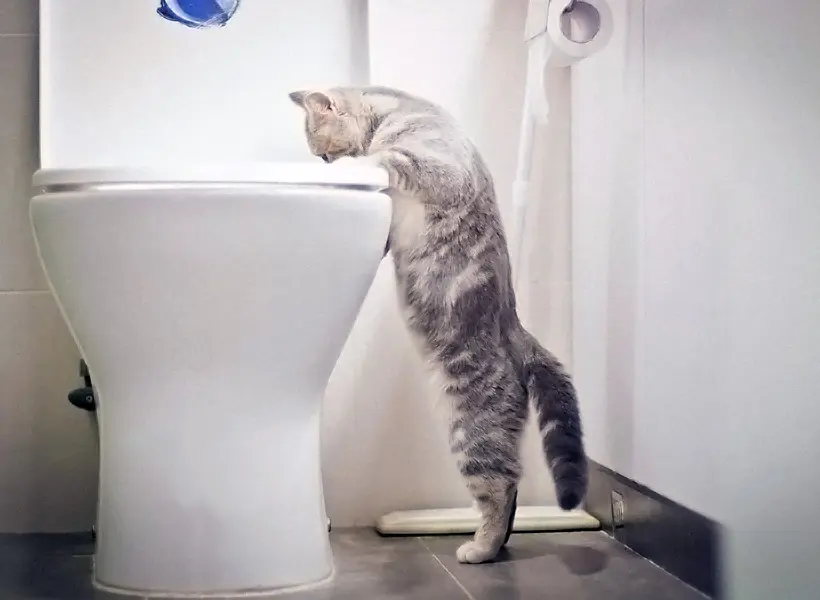Reasons You Should Never Flush Cat Poop Down Your Toilet - Critical Information
Reasons You Should Never Flush Cat Poop Down Your Toilet - Critical Information
Blog Article
We have found this article involving How to Dispose of Cat Poop and Litter Without Plastic Bags directly below on the internet and thought it made sense to talk about it with you in this article.
Intro
As feline owners, it's vital to bear in mind just how we take care of our feline close friends' waste. While it may seem practical to purge pet cat poop down the toilet, this practice can have detrimental repercussions for both the environment and human health.
Ecological Impact
Purging pet cat poop presents dangerous virus and parasites into the water supply, positioning a considerable risk to marine ecological communities. These impurities can negatively influence aquatic life and concession water quality.
Wellness Risks
Along with ecological problems, flushing feline waste can additionally posture health and wellness threats to people. Pet cat feces may have Toxoplasma gondii, a bloodsucker that can trigger toxoplasmosis-- a possibly severe disease, particularly for expectant women and individuals with damaged body immune systems.
Alternatives to Flushing
Luckily, there are much safer and a lot more liable ways to throw away pet cat poop. Think about the following options:
1. Scoop and Dispose in Trash
One of the most typical method of taking care of feline poop is to scoop it into an eco-friendly bag and toss it in the garbage. Make sure to utilize a dedicated clutter scoop and dispose of the waste immediately.
2. Usage Biodegradable Litter
Go with naturally degradable pet cat litter made from materials such as corn or wheat. These clutters are eco-friendly and can be securely thrown away in the garbage.
3. Bury in the Yard
If you have a backyard, consider burying feline waste in a marked location far from veggie gardens and water sources. Be sure to dig deep enough to stop contamination of groundwater.
4. Set Up a Pet Waste Disposal System
Buy a pet dog waste disposal system especially created for pet cat waste. These systems utilize enzymes to break down the waste, lowering odor and ecological impact.
Final thought
Liable pet ownership expands beyond supplying food and shelter-- it additionally involves proper waste management. By avoiding flushing cat poop down the toilet and choosing different disposal methods, we can lessen our ecological footprint and secure human health and wellness.
Why Can’t I Flush Cat Poop?
It Spreads a Parasite
Cats are frequently infected with a parasite called toxoplasma gondii. The parasite causes an infection called toxoplasmosis. It is usually harmless to cats. The parasite only uses cat poop as a host for its eggs. Otherwise, the cat’s immune system usually keeps the infection at low enough levels to maintain its own health. But it does not stop the develop of eggs. These eggs are tiny and surprisingly tough. They may survive for a year before they begin to grow. But that’s the problem.
Our wastewater system is not designed to deal with toxoplasmosis eggs. Instead, most eggs will flush from your toilet into sewers and wastewater management plants. After the sewage is treated for many other harmful things in it, it is typically released into local rivers, lakes, or oceans. Here, the toxoplasmosis eggs can find new hosts, including starfish, crabs, otters, and many other wildlife. For many, this is a significant risk to their health. Toxoplasmosis can also end up infecting water sources that are important for agriculture, which means our deer, pigs, and sheep can get infected too.
Is There Risk to Humans?
There can be a risk to human life from flushing cat poop down the toilet. If you do so, the parasites from your cat’s poop can end up in shellfish, game animals, or livestock. If this meat is then served raw or undercooked, the people who eat it can get sick.
In fact, according to the CDC, 40 million people in the United States are infected with toxoplasma gondii. They get it from exposure to infected seafood, or from some kind of cat poop contamination, like drinking from a stream that is contaminated or touching anything that has come into contact with cat poop. That includes just cleaning a cat litter box.
Most people who get infected with these parasites will not develop any symptoms. However, for pregnant women or for those with compromised immune systems, the parasite can cause severe health problems.
How to Handle Cat Poop
The best way to handle cat poop is actually to clean the box more often. The eggs that the parasite sheds will not become active until one to five days after the cat poops. That means that if you clean daily, you’re much less likely to come into direct contact with infectious eggs.
That said, always dispose of cat poop in the garbage and not down the toilet. Wash your hands before and after you clean the litter box, and bring the bag of poop right outside to your garbage bins.
https://trenchlesssolutionsusa.com/why-cant-i-flush-cat-poop/

Do you really like reading up on How to Dispose of Cat Poop and Litter Without Plastic Bags? Write a comment below. We would be pleased to find out your thinking about this review. In hopes to see you back again before long. Loved our piece of writing? Please share it. Let somebody else check it out. We appreciate reading our article about Can You Flush Cat Poo or Litter Down the Toilet?.
Click Here To Read More Report this page